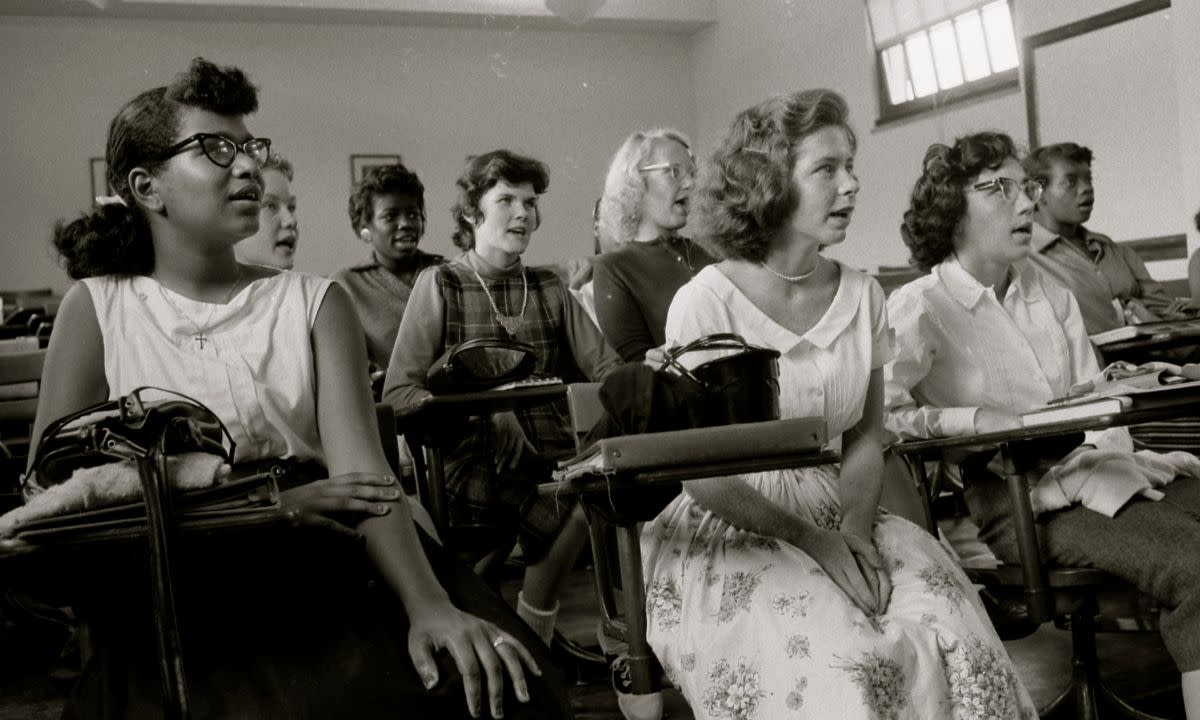Schools are More Segregated than 30 Years Ago. But How Much?

Racial segregation in classrooms edged upward over the past three decades, according to the work of two prominent sociologists. Across America’s largest school districts, the expansion of school choice and the winding down of court-mandated desegregation decrees have resulted in white students being more racially isolated from their non-white peers, the authors find.
Timed to coincide with the 70th anniversary of the Supreme Court’s landmark decision in Brown v. Board of Education to end legal segregation in public schools, the research offers further evidence that integration hit its peak during the 1980s, only to recede somewhat in the time since. But it also poses questions about the true scale of that backsliding nationally, as well as the solutions that could be reasonably embraced to counter it.
Brown v. Board at 65: Will Schools Ever Be Integrated?
Notably, the trend toward isolation has been underway even as Americans of different races and national origins are living in increasingly close proximity to one another. Ann Owens, a professor at the University of Southern California and one of the co-authors of the analysis, said that public policy was “undoing the decline in residential segregation.”
“While it’s true that school segregation is higher in places where residential segregation is higher, it can’t explain the increase over the last 30 years because residential segregation has not been increasing over that time,” Owens said.
Owens and her co-author, Stanford professor Sean Reardon, have spent years chronicling demographic changes in school through the lenses of both race and class. Their latest study has not yet been made public, though its findings were presented at a conference at Stanford in early May. The duo has also unveiled a new interactive data tool, the Segregation Explorer, which allows users to investigate patterns of segregation across schools, districts, cities and counties.
It’s also true that white kids attend school with fewer white kids — because there are fewer white kids around.
Ann Owens, University of Southern California
Using data from the National Center for Education Statistics, the analysis measures children’s exposure to peers of different racial backgrounds, comparing the average African American student’s proportion of white classmates with the average white student’s proportion of African American classmates in the same district. The difference between the two figures, measured on a 0–1 scale, is deemed the district’s “segregation level.”
As previous historical studies have shown, after falling dramatically in the wake of federally led integration efforts in the 1960s and ‘70s, school segregation began creeping back up in the late 1980s. Between 1991 and 2019, Owens and Reardon calculated, the segregation level rose by over one-third in the 541 U.S. school districts that enroll at least 2,500 African American students.

But Owens cautioned that, even accounting for that shift, schools are vastly more racially mixed than in the days before Brown. When examined over the last half-century, the growth in segregation is much harder to perceive. The total increase in segregation levels amounts to less than five percentage points since the presidential administration of George H.W. Bush.
I don't know if I would look at the trend from 1990 to 2020 and characterize that as 'resegregation.'
Brian Kisida, University of Missouri
Brian Kisida, an economist at the University of Missouri, said that it was critical to monitor changes in cross-racial exposure over time. In his view, however, existing evidence did not constitute “anything that sets off alarm bells compared with the history of this issue.”
“I think segregation is an incredibly important problem, and one we’ve had terrible trouble with in this country,” Kisida said. “But I don’t know if I would look at the trend from 1990 to 2020 and characterize that as ‘resegregation.’”
The charter factor
Kisida added that the paper’s evidence of charter schools’ role in driving racial isolation made for a “very solid finding” that dovetailed with his own prior work.
In 2019, he co-authored an article examining the same phenomenon, incorporating an even wider swath of data than Owens and Reardon. That study showed that charters exerted a meaningful, if modest, impact on the racial composition of the surrounding districts; eliminating the charter sector entirely would lead to a 5 percent decrease in the segregation of Hispanic and African American students, they found. (Kisida added that the effect was substantially counteracted by charters’ propensity to draw students into more integrated environments than their residentially zoned school, lessening segregation between districts.)
The newer research estimates that total growth in segregation would have fallen between two and three percentage points — from around 19 percent on their exposure index to a little under 17 percent — had charter schools not rapidly expanded after the year 2000.
12 Things to Know About School Segregation — and How Integration Helps Students
Another, smaller factor in pushing back integration, the authors argue, was the gradual eclipse of desegregation orders that began in the 1990s. As federal courts released one district after another from injunctions requiring them to evenly balance racial groups across schools, campuses became about 1 percentage point more segregated than they otherwise would have been.
Boston College professor Shep Melnick, who published a book last year on the halting efforts toward desegregation that began in 1954 with Brown, said that the lifting of injunctions accelerated during the early 2000s, eventually releasing more than half of the districts that had previously been under court oversight. In some instances, though, local enforcement — or even awareness — of the orders was so paltry that their sunsetting would not have made much difference.
Some of these schools that were formerly under court order didn't even realize they were under court order. So the effects of the orders in those cases probably were not that great.
Shep Melnick, Boston College
“Some of these schools that were formerly under court order didn’t even realize they were under court order,” said Melnick. “So the effects of the orders in those cases probably were not that great.”
Melnick and Owens agreed that the public needed to be conscious of the differing definitions of racial segregation that underlie research studies. For example, multiple waves of immigration from Asia and Latin America have made the U.S. population significantly more diverse than it was in the middle of the 20th century. Efforts to quantify desegregation simply as the exposure of African American students to white classmates must account for the fact that white students represent a much smaller share of the total student body.
“When you say, ‘Black students attend school with fewer white kids than they did 50 or 60 years ago,’ that’s true,” Owens concluded. “But it’s also true that white kids attend school with fewer white kids — because there are fewer white kids around.”




